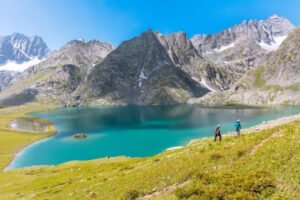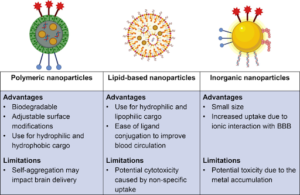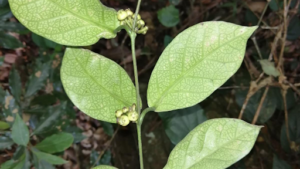UPSC GS 1
Glacial Lakes
- News: The expanding glacial lakes in the Himalayas are a matter of serious concern and the National Disaster Management Authority or NDMA has finalised a list of 189 “potentially dangerous” lakes.
- Definition: A glacial lake is a body of water that originates from a glacier, typically forming at the foot of the glacier, though it can also develop on, in, or beneath the glacier itself.
- Classification: The Indian Space Research Organisation (ISRO) categorizes glacial lakes into four broad types based on their formation processes: moraine-dammed, ice-dammed, erosion-based, and others.

- Formation of Glacial Lakes
-
- Erosion and Deposition: As glaciers move, they erode the landscape beneath them, creating depressions and grooves that may eventually fill with water.
- Moraines: Glaciers also churn up rock and soil, forming ridges of debris known as moraines, which can act as natural dams.
- Retreating Glaciers: Most glacial lakes form when a glacier retreats, leaving behind depressions that are filled with meltwater.
- Natural Dams: In addition to moraines, natural ice dams can form, particularly when surging glaciers rapidly block valleys or fjords, trapping meltwater and creating glacial lakes.
-
- Types of Natural Dams
-
- Ice Dams: These are formed when fast-moving glaciers block the drainage of meltwater by closing off a valley or fjord.
- Moraine Dams: Terminal moraines, composed of compacted debris, can create stable, long-lasting lakes. However, some moraine dams are porous, allowing the lakes to slowly drain into nearby rivers.
-
- Importance and Risks
-
- Freshwater Sources: Glacial lakes are vital sources of freshwater for rivers, particularly in mountainous regions.
- GLOFs (Glacial Lake Outburst Floods): While glacial lakes provide essential water resources, they also pose significant risks. GLOFs occur when the natural dams containing these lakes fail, releasing large volumes of meltwater that can cause sudden and devastating floods downstream.
-
Read also: Understanding the State’s Power to Tax Mining Activities | UPSC
UPSC GS 2
Security of Supply Arrangement (SOSA)
- News: India and US have recently signed two pacts: Security of Supply Arrangement (SOSA) and a Memorandum of Agreement regarding Assignment of Liaison Officers.
- Security of Supply Arrangement (SOSA)
- Purpose: SOSA aims to ensure reciprocal priority support for goods and services essential for national defense between India and the U.S.
- Goal: Enhance the resilience of defense supply chains by allowing both nations to acquire the necessary industrial resources from one another during unforeseen supply chain disruptions.
- Legality: Non-binding
- Key Features
-
- Reciprocal Support: Both nations agree to provide each other with prioritized access to defense-related industrial goods and services during times of need.
- Supply Chain Resilience: SOSA encourages the defense industrial ecosystems of India and the U.S. to work together, enhancing supply chain resilience and interoperability.
- DPAS Assurance: Under the U.S. Defense Priorities and Allocations System (DPAS), the U.S. Department of Defense (DoD) and Department of Commerce (DoC) will provide India with assurances to receive prioritized defense supplies.
- India’s Role: India will establish a government-industry Code of Conduct with its defense industrial base, where Indian firms voluntarily agree to provide priority support to the U.S.
- Priority Supplies: SOSA will make it easier for Indian companies to get priority supplies from the US and revitalise the defence industry cooperation.
- Proactive Supply Chain Management: The agreement facilitates the establishment of working groups, communication mechanisms, and streamlined processes to address potential supply chain issues in peacetime, emergencies, or armed conflict.
- Investment Strategies: SOSA serves as a tool for developing investment strategies to ensure redundancy and security in the global defense supply chain.
-
- India’s Status:
-
- India is the 18th nation to partner with the U.S. under SOSA.
- Other partners include Australia, Canada, Denmark, Estonia, Finland, Israel, Italy, Japan, Latvia, Lithuania, the Netherlands, Norway, Republic of Korea, Singapore, Spain, Sweden, and the UK.
-
- Importance: SOSA is expected to boost defense industry cooperation between India and the U.S., with the U.S. being a major buyer of Indian defense exports.
- Memorandum of Agreement regarding Assignment of Liaison Officers:
-
- This will lead to increased sharing of information between India and the US.
- This MoU will entail posting of Indian armed forces officers in key strategic US Commands.
- India would deploy the first Liaison Officer to the Headquarters Special Operations Command in Florida, US.
-
- Other Key Pacts between India and US:
-
- Basic Exchange and Cooperation Agreement (BECA)
- Communications Compatibility and Security Agreement (COMCASA)
- Logistics Exchange Memorandum of Agreement (LEMOA)
- Industrial Security Annex
- General Security of Military Information Agreement (GSOMIA)
-
UPSC GS 3
World’s Second Largest Diamond Found In Botswana
- News: A 2,492-carat diamond – the second largest ever – has been discovered in Botswana using X-ray technology.
- New Discovery: A recently discovered diamond ranks second only to the 3,106-carat Cullinan Diamond, found in South Africa over a century ago.
- Location and Importance: The diamond was unearthed in Botswana, one of the world’s leading diamond producers. Botswana relies heavily on its diamond industry, which constitutes 30% of its GDP and 80% of its exports.
- Technology Used: Advanced X-ray transmission technology was used to recover the diamond, ensuring that large stones are not damaged during extraction.
- Assessment Pending: The diamond has yet to be fully evaluated, and its potential for yielding high-quality gems is still being determined.
- Diamond Characteristics
-
- Formation: Diamonds form deep within the Earth’s mantle and are brought to the surface through volcanic activity, typically found in volcanic landforms like dykes and sills.
- Uses: Diamonds are widely used in jewelry due to their brilliance and hardness, as well as in industrial cutting tools and polishing.
-
- Diamonds in India
- Major Diamond Locations:
-
- Panna Belt: Madhya Pradesh
- Wajrakarur Kimberlite Pipe: Anantapur district, Andhra Pradesh
- Krishna River Basin: Gravels in Andhra Pradesh
-
- Recent Discoveries: New kimberlite fields have been discovered in the Raichur-Gulbarga districts of Karnataka.
- Processing Hubs: The cutting and polishing of diamonds in India is mainly concentrated in Surat, Navasari, Ahmedabad, and Palampur.
- Global Diamond Production: Russia holds the title of the largest diamond producer in the world, followed by Botswana, Canada and DRC.
- Notable Producers:
-
- Botswana: Major mines include Orapa and Jwaneng.
- Australia: Known for its coloured diamonds, including pink, purple, and red varieties.
- South Africa: Rich in diverse diamond deposits, including kimberlite and fissure mining.
- Synthetic Diamonds: The United States is the largest producer of synthetic industrial diamonds.
-
- Global Diamond Resources
-
- Russia: Believed to have the largest and richest diamond resources globally.
- Botswana: Leads in terms of value and holds significant diamond reserves in volume.
- Democratic Republic of Congo: A major producer of diamonds in Africa
-
Nanoparticle-Based Drug Delivery Systems
- News: A groundbreaking drug delivery technique has been created using polymeric nanoparticles.
- Polymer Nanoparticles Overview
- Definition:
-
- Polymer nanoparticles are solid particles composed of macromolecular polymers, with sizes ranging from 10 to 1000 nanometers (nm).
-
- Functionality:
-
- These nanoparticles protect encapsulated macromolecules from enzymatic degradation and can modify the behavior and tissue distribution of the drugs they deliver within the body.
-

- Nanoparticle-Based Drug Delivery Systems
-
- Nikkomycin-Loaded Nanoparticles: Scientists have utilized Nikkomycin, an inhibitor of chitin synthesis produced by Streptomyces bacteria, and incorporated it into polymeric nanoparticles to specifically target fungal infections.
- Targeting Fungal Cell Walls:
- Since chitin, the main structural component of fungal cell walls, is absent in human cells, it serves as an ideal target for antifungal therapies.
- The nanoparticle-based delivery system exploits this difference to hinder fungal growth effectively.
-
- Effectiveness Against Aspergillosis
-
- Fungal Targets: The Nikkomycin-loaded nanoparticle formulation has shown significant effectiveness against Aspergillus flavus and Aspergillus fumigatus, fungi responsible for pulmonary aspergillosis.
- Safety Profile: This drug delivery system is effective at inhibiting fungal growth without causing cytotoxic (cell-damaging) or hemolytic (red blood cell-damaging) effects, making it a safer alternative to traditional antifungal treatments.
-
- Potential Applications
-
- At-Risk Populations: This nanoparticle-based method is particularly beneficial for patients at high risk of fungal infections, such as those with asthma, cystic fibrosis, HIV, cancer, or those undergoing long-term corticosteroid therapy.
-
- Nanotechnology Overview
-
- Definition: Nanotechnology involves manipulating atoms and molecules at the nanoscale, typically within the range of 1 to 100 nm, to create structures, devices, and systems with novel properties.
- Nanoparticles’ Unique Properties: Due to their ultra-small size and high surface area-to-volume ratio, nanoparticles exhibit unique physical and chemical characteristics that make them suitable for a wide range of applications, including targeted drug delivery systems.
-
Read also: Patent Regime in India: Overview and Strategic Insights | UPSC
Gongronema Sasidharanii
- News: A plant with smooth stems and small urn-shaped flowers spotted in Idukki district has been identified as an entirely new species of the genus Gongronema.

- Gongronema Sasidharanii Overview
- Discovery: A new plant species, Gongronema sasidharanii, was discovered in Pampadum Shola National Park, Idukki District, Kerala.
- Description: This plant has smooth stems and features small, urn-shaped flowers that range in color from creamy white to purplish-green.
- Significance: This is the first time the genus Gongronema has been reported in southern India.
- Genus Distribution in India: Previously, the genus Gongronema had only been recorded in northeast India, Uttar Pradesh, Punjab, and West Bengal, represented by three species.
- Pampadum Shola National Park
- Location: Pampadum Shola National Park is situated in the eastern part of the Southern Western Ghats, in Idukki District, Kerala.
- Size and Terrain: The park covers an area of approximately 12 square kilometers, featuring an undulating terrain with hillocks ranging in height from 1600 to 2400 meters.
- Name Meaning: “Pampadum Shola” translates to “the forest where the snake dances.”
- Climate: The park experiences a misty and cloudy climate year-round, with heavy rainfall during the North-East monsoon.
- Vegetation Types: The park contains a variety of ecosystems, including evergreen forests, moist deciduous forests, shola grasslands, and semi-evergreen areas.
- Flora Diversity: Pampadum Shola is home to 22 species of trees, 74 species of herbs and shrubs, and 16 species of climbers.
- Mammals: The park is a habitat for tigers, leopards, giant gizzard squirrels, the rarely seen flying squirrels, Nilgiri Tahr, and spotted deer. The Nilgiri marten, the only marten species found in South India, can also be spotted.
- Butterflies: Approximately 100 species of butterflies have been recorded in the park.

